The history of Tatsuoka Castle Site (1)
This is a continuation of the previous article. I will write some more about the history of Tatsuoka Castle.
In 1871, the Meiji government issued an order to the clans to demolish the castle. So most of the buildings in Tatsuoka Castle were sold, leaving only the “Odaidokoro" (Castle’s kitchen) . Over a dozen years, the earthen mounds were cut down and the moat was gradually reclaimed.
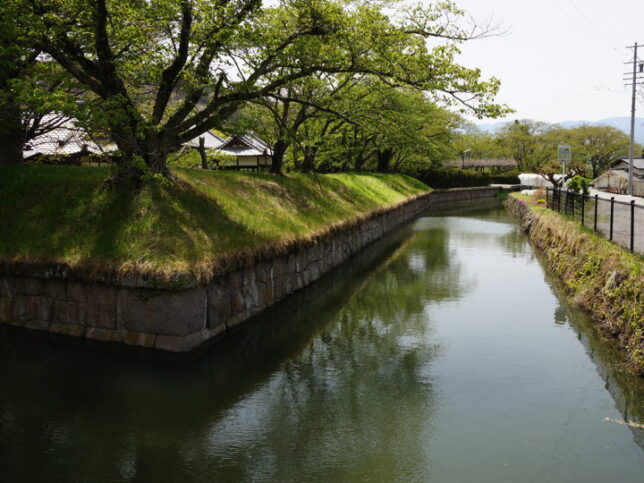
Currently, the moat is filled with water as shown in the photo, but this was not the case during the Meiji and Taisho eras. The moat, which was filled with soil, was mostly used as a mulberry field in 1890s.
Taking a look at the changes in Tatsuoka Castle after it was abandoned.
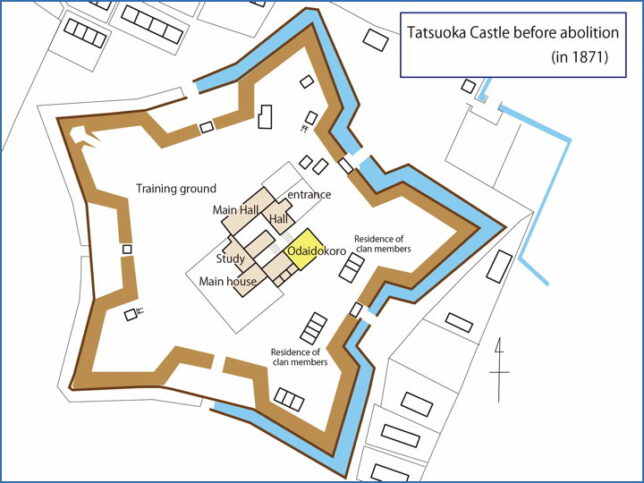
In 1873, the school system was promulgated, and the Shoyu School was established in the present Banshoin-Temple in this area.
In 1875, the Odaidokoro was donated to the school and reformed to be used as a school building. From this time on, the ruins of Tatsuoka Castle became a school.
In 1886, Shoyu School was renamed Taguchi School.
In 1890, the school became Taguchi Elementary School.
Between 1894 and 1902, new school buildings were constructed. First, the east school building (1894), then the gymnasium (1898), and the north and south school buildings (1902) were built.
In 1919, the east school building was expanded, and in 1926, the north school building was expanded to a two-story building.
I wonder how it was regarded as a “castle site" in those days. I found a small mention of it in the guidebook “Saku Railway Guide" published in 1915. The Saku Railway was a private railway, the predecessor of the current Koumi Line.
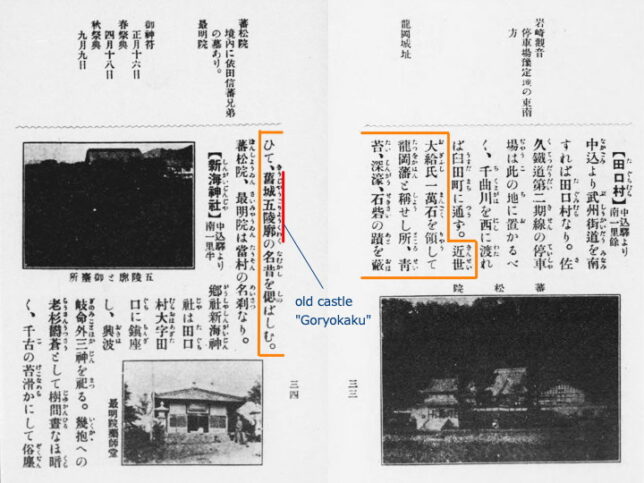
In the introduction to Taguchi Village, the following was written.
“In the early modern period, the Ogyu clan held 10,000 koku here and called it the Tatsuoka domain. Today, moss and grass cover the remains of the deep moat and stone fort, reminding us of the old castle “Goryokaku".
Perhaps because it was a tourist guide, it did not mention that there was a school.
In the Taisho era (1912-1926), militarism began to influence education, and the purpose of education was set to “cultivate national morality and national thought".
In 1935, the Council for the Renewal of Teaching and Learning was established, and its policy was to reform academics and education based on the “national ideals and the Japanese spirit".
Around the same time, in the field of Education, it emphasized the importance of understanding one’s hometown. In the midst of this trend, the Minamisaku Division of the Shinano Educational Association decided to conduct a survey of old castle ruins in the county as a project for 1930.
The results of the survey were published as “Survey of Old Castle Sites in Minamisaku County" (edited by the Minamisaku Division of the Shinano Educational Association).
I drew the following diagram based on a drawing of the ruins of Tatsuoka Castle that was included in the book.
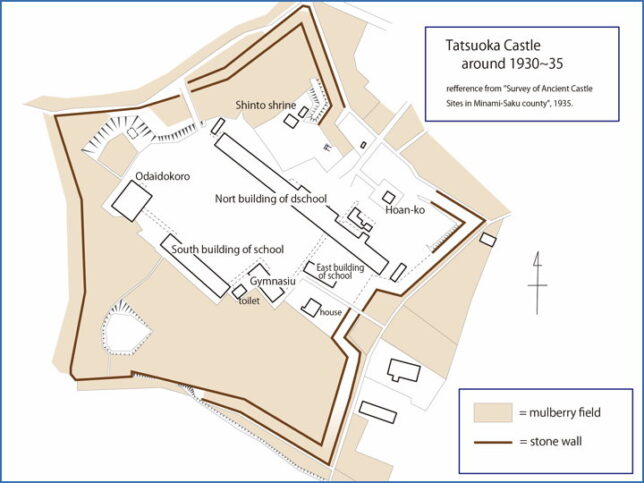
The light brown areas are fields. Most of the land had been mulberry fields. The area where the moat used to be is also a mulberry field. The moat on the east side is white, but I left it white because there was no mention of a field here in the original drawing. However, I think there was a high possibility that this was also a mulberry field, although just not shown on the map.
The Odaidokoro was moved to its current location in 1929 and repaired. Before that, it was located near the east school building.
So, I added the location before the relocation in the map. Before the relocation, it was always in the same place when the castle was built.
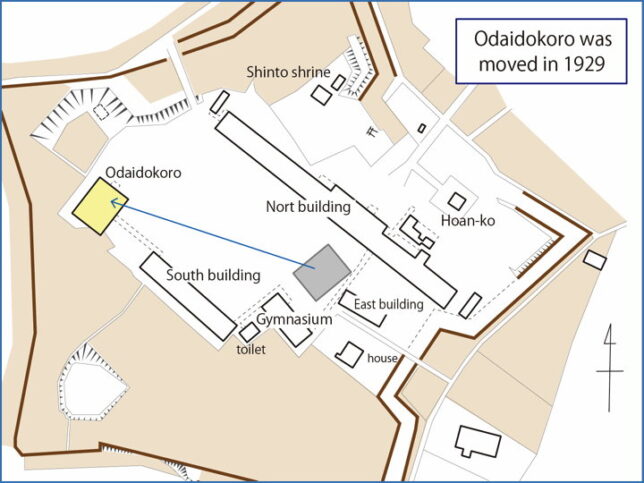
Around the time, the local residents were also becoming more aware of the castle ruins.
In 1932, the Tatsuoka Castle Preservation Association was organized. The association invited experts from the army’s castle construction headquarters to carry out restoration work, mainly digging out the moat. (~1933)
Then in 1934, the ruins of Tatsuoka Castle were designated as a national historic site by the Ministry of Education.
The “Study of Japanese Historical Sites" (Sanpei Ueda, Daiichikoron-sha) published in 1940 describes the situation during this period as follows.
" Originally, the Tatsuoka Clan’s castle did not have a spectacular war record like Hakodate’s, and was not only small in size, but was destroyed soon after its completion as the abolition of the clan, so even the local people did not know what kind of structure. It has been used as a school site.
In recent years, there has been a growing desire to honor this historical site, and volunteers in the area had made a wish to restore and preserve the castle of the old clan. They organized a preservation group with Mr. Tsune Tashiro, who lived in Tokyo and was from the Tatsuoka clan. As a result of investigating with the cooperation of the army’s fortification headquarters, it became clear that it was a castle of five-sided fortification.
Therefore, they immediately applied to the Ministry of Education to designate it as a historic site. Mr. Ogino of the Ministry inspected the site and in May 1934, the Minister of Education designated it as a historic site."
The name Goryokaku (five-sided fortification) appeared in guidebooks even in the Taisho era (1912-1926), so I felt that the first half of the story was a bit exaggerated. However, it may be true that many people were not know about the castle.
Anyway, in 1934, the site of Tatsuoka Castle became a national historic site.
(To be continued)
[Appendix]
I had the image that the moat was systematically reclaimed after the castle was abandoned, but that seems to be not the case.
It seems that the moat was gradually filled over a dozen years. I wrote my previous article without knowing it, so I think there are some gaps in the past articles.
[Reference] (All materials are written in Japanese)
“Historic Site Tatsuoka Castle Ruins Preservation Management Plan" (Saku City Board of Education 2013)
“Saku City Buried Cultural Property Survey Report Tatsuoka Castle Ruins I, II, III, IV" (Saku City Board of Education 2014)
“Survey of old castle ruins in Minamisaku-gun" ( Minamisaku Division of Shinano Education Society.)
“Saku Railway Guide" (Saku Railway Co., Ltd., 1915)
“Study of Japanese Historic Sites" (Sanpei Ueda, Daiichi-Koronsha, 1940)
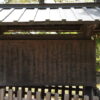
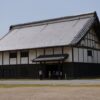
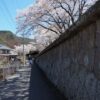
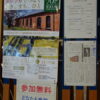
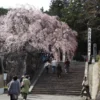
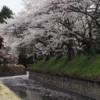
Recent Comments